Sign In to Your Account
Subscribers have complete access to the archive.
Sign In Not a Subscriber?Join NowSome Safe and Comfortable Airplanes Well-Designed for Short or Long Distance Travel
May 1929THE demand for airplanes suited to the requirements of the private owner and amateur flier has increased so tremendously during the past year that manufacturers have scarcely been able to keep apace with it. The result has been not only the rather hurried appearance of improved models of established planes but the introduction of many entirely new designs. More than one hundred types are now available that are suited, theoretically at least, to private flying.
Some of these are experimental and will eventually prove to be not at all adequate. Others represent the finest work of the foremost engineers, designers and builders of the aeronautical industry. One thing is certain: the precipitant advent of so many types of planes cannot but add to the flying enthusiast's difficulty in choosing his first ship.
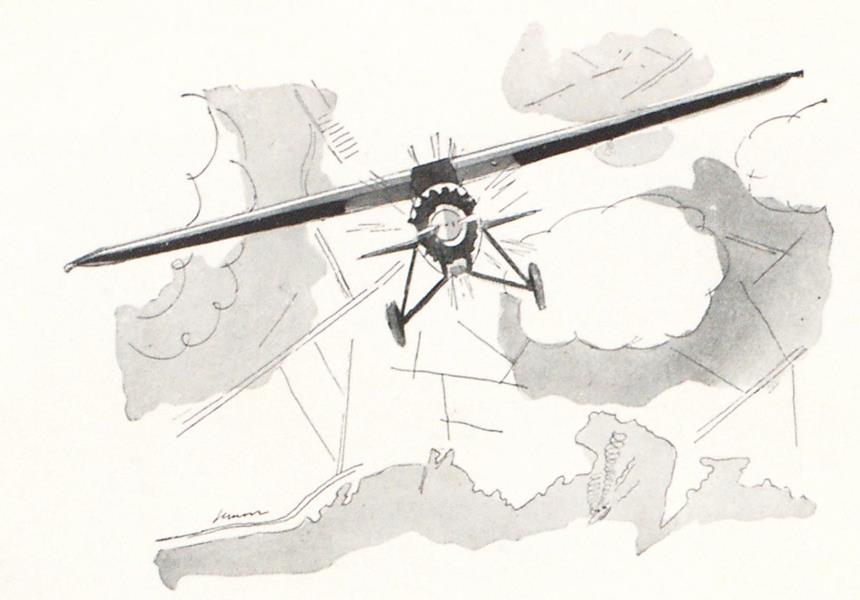 THE LOCKHEED VEGA The trans-continental record holder, the Lockheed Vega is notable for its high cruising speed, wood construction and lightness on controls
THE LOCKHEED VEGA The trans-continental record holder, the Lockheed Vega is notable for its high cruising speed, wood construction and lightness on controls
Two outstanding features seem to be common to all well-designed planes—safety and comfort. The Aeronautics Branch of the Department of Commerce guarantees the first feature by refusing to license aircraft that fail to measure up to its rigid requirements.
The designers know that private owners insist on comfort and convenience. The new cabin models, or the better ones, are as luxuriously upholstered and equipped as the best motor cars. Engine silencers are used extensively. Heating, ventilation, and protection from wind are carefully worked out. Adequate baggage space has become an essential.
Exterior finish is being given more thought than formerly. Lacquer paints are used almost entirely, both because of their superior durability under all weather conditions and because they permit of more attractive finish and colour combinations. Oil, grease and dirt are inconveniences seldom encountered in the modern sport plane. Wheel brakes, engine starters, lighting equipment for night flying and a dozen other improvements are considered standard equipment.
For the man or woman just learning to fly, or the ex-service pilot who wishes to get his hand in again, the open cockpit type is certainly preferable to the closed cabin design. The "feel of the air" and the necessary judgment of speed, distance and angles are more easily developed in the open jobs than from the restricted vision of a cabin window. The proof of this contention is found in the fact that flying schools, almost without exception, use open cockpit planes for their instructional work. There are also many experienced fliers who prefer the exhilaration of stinging wind and unobstructed vision to the greater protection and limited visibility of an enclosed model.
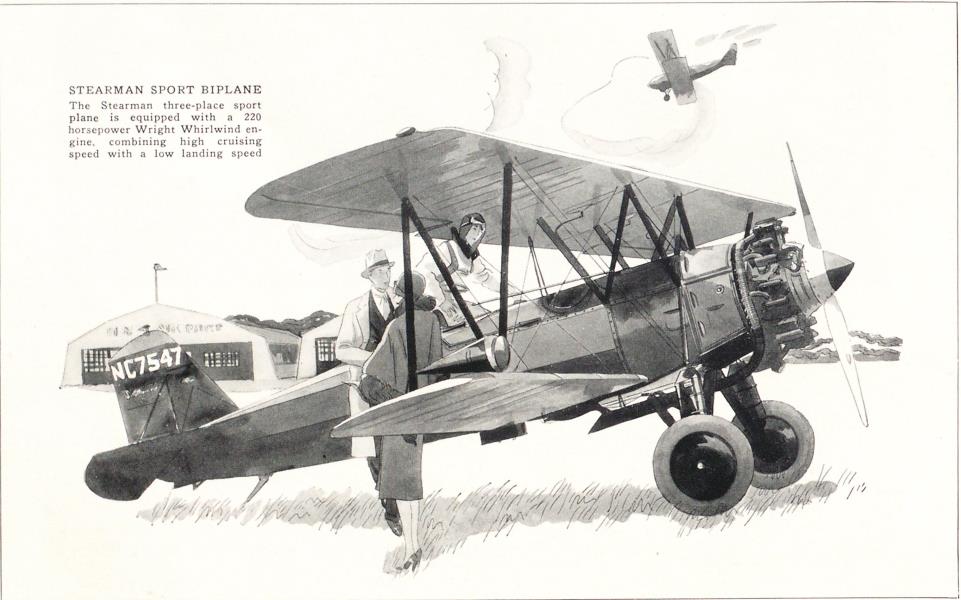 STEARMAN SPORT BIPLANE The Stearman three-place sport plane is equipped with a 220 horsepower Wright Whirlwind engine, combining high cruising speed with a low landing speed
STEARMAN SPORT BIPLANE The Stearman three-place sport plane is equipped with a 220 horsepower Wright Whirlwind engine, combining high cruising speed with a low landing speed
Of the open planes, several are outstanding and regarded as uniformly well-constructed and reliable. The Stearman has, of late, become increasingly and deservedly popular. It is available equipped only with the Wright Whirlwind engine, with which it gives an excellent performance. The Stearman engineers have so far resisted the temptation to underpower their plane, a temptation to which a few others have yielded, with resulting ships that are too heavy and unwieldy for their power plants.
Travel Air features a sport biplane, three-place, designed for several types of motors— the Curtiss OX-5, OXX-6, Hispano Suiza, Warner Scarab and Wright Whirlwind. Its best performance is obtained with the two latter types. Waco, another standard product, also makes one popular model of biplane which can accommodate several different engines but, as with the Travel Air, the best performance is secured with the Whirlwind.
The Alexander Eaglerock handles nicely, particularly for beginners, because of its large wing area, with a resulting slow landing speed and flat glide. The Eaglerock is sturdily constructed and well-fitted to endure the bumps and hard usage that befall the school plane as well as the privately owned plane that is extensively flown and often not too well cared for. Laird, Swallow, Lincoln Page, American Eagle and Pitcairn all produce open type planes that embody first class features of construction. There are others, of course, but these are undoubtedly among the leaders.
There are several excellent light open monoplanes, but few of them seem to fully meet the requirements of the fledgling flier.
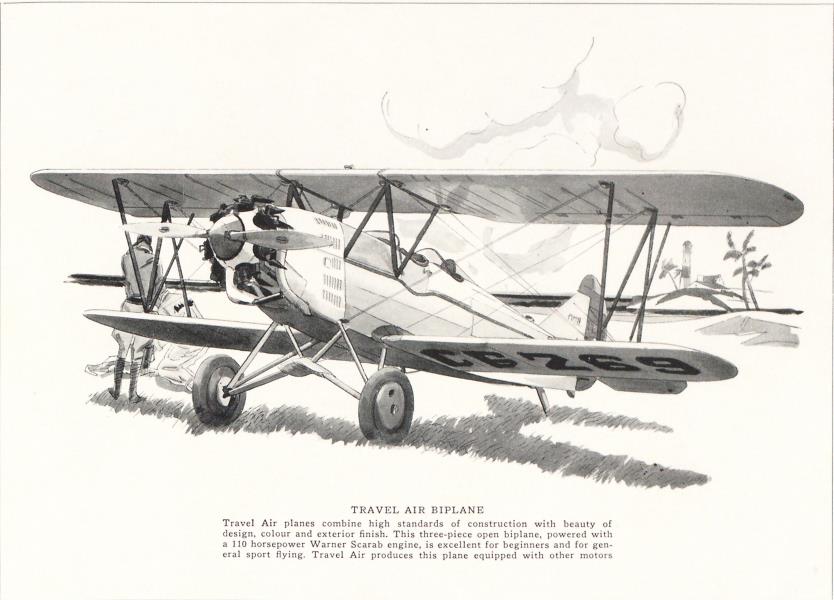 TRAVEL AIR BIPLANE Travel Air planes combine high standards of construction with beauty of design, colour and exterior finish. This three-piece open biplane, powered with a 110 horsepower Warner Scarab engine, is excellent for beginners and for general sport flying. Travel Air produces this plane equipped with other motors
TRAVEL AIR BIPLANE Travel Air planes combine high standards of construction with beauty of design, colour and exterior finish. This three-piece open biplane, powered with a 110 horsepower Warner Scarab engine, is excellent for beginners and for general sport flying. Travel Air produces this plane equipped with other motors
Since Colonel Lindbergh crossed the Atlantic in 1927, Ryan planes have been regarded with high favour. Their present model, the Brougham, is basically and structurally the same as the famous Spirit of St. Louis. The Ryan engineers are sometimes criticised for making almost every new plane different from its predecessor in minor detail but this would seem to indicate that they are quick to take advantage of what experience teaches them. Like all cabin planes, the Ryan is not for the beginner, but rather for the flier of some experience or the private owner who prefers to engage a professional pilot.
Fairchild offers three excellent monoplane models. The largest, which is equipped with the Pratt & Whitney 410 horsepower Wasp engine, accommodates six passengers and a pilot. A smaller cabin plane seats four and is powered with a Wright Whirlwind engine. The third model is a two-seater sport design with an 80 horsepower British "Genet" motor. A feature of the Fairchild is its folding wings, which swing back against the body and enable it to be housed in but one third the space otherwise required, a rather important item when plane storage is charged for on the basis of floor space occupied.
The Lockheed Vega is the racehorse of the enclosed monoplanes. It performs like a fighting scout and apparently stands the strain of hard usage remarkably well. There are those who maintain, that its all-wood construction will eventually result in high maintenance cost, a theory denied by its builders. Be that as it may, it is undeniably the most beautiful plane to be found in the air today.
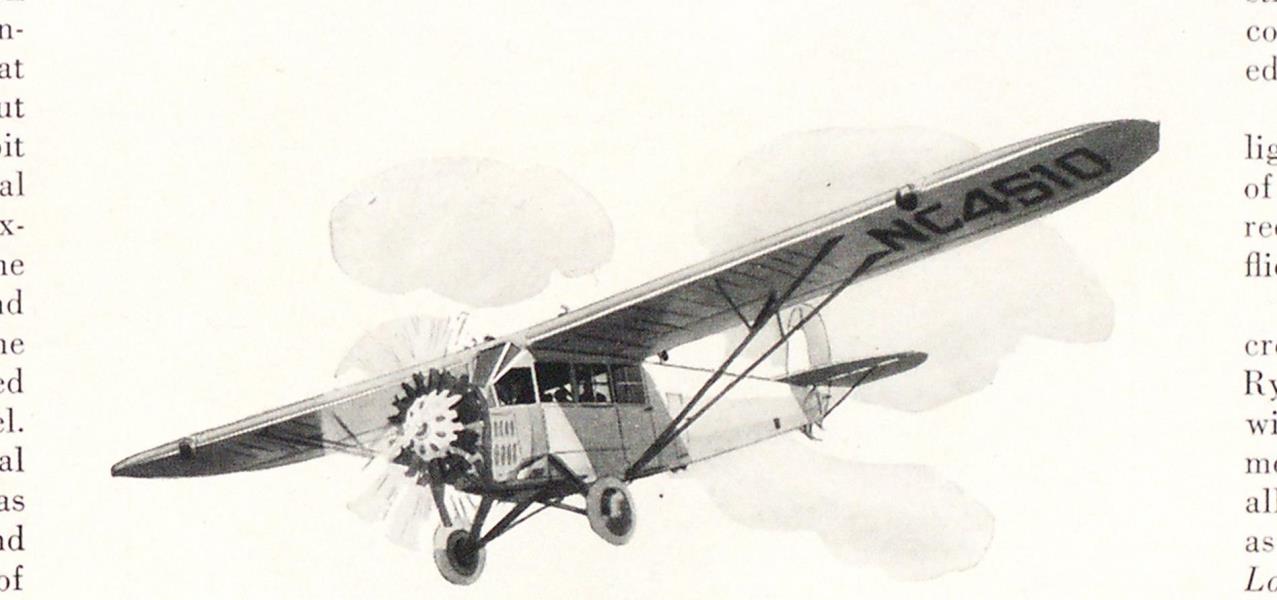 FAIRCHILD MONOPLANE This Fairchild Cabin Monoplane, with a 410 horsepower Pratt & Whitney Wasp engine, is a splendid plane combining speed and commodious comfort
FAIRCHILD MONOPLANE This Fairchild Cabin Monoplane, with a 410 horsepower Pratt & Whitney Wasp engine, is a splendid plane combining speed and commodious comfort
The Buhl models, cabin monoplanes, are steadily increasing in popularity, for which there must be a logical reason. Fokker, of course, is an old standby. Their Universal and SuperUniversal, the former fitted with the Wright Whirlwind and the latter with the Wasp, are as good airplanes as money can buy. The Stinson models are also coming to the fore. Bellancas have twice spanned the Atlantic, which should be sufficient guarantee of their worth. Cessna, a newcomer in the field, has also brought out a cabin ship that is worthy of consideration.
To this list of builders of planes for private owners may soon be added Leoning, Vought, Douglas, Glenn Martin, Boeing, Keystone, Consolidated Aircraft and Curtiss, all of them regarded as outstanding makers of fine airplanes. Their efforts have heretofore been devoted almost exclusively to the construction of service planes for the Army and Navy and the fact that they are soon expected to enter the commercial field is indicative of the growing importance of this phase of aerial activity, and the interest of many more people in air travel.
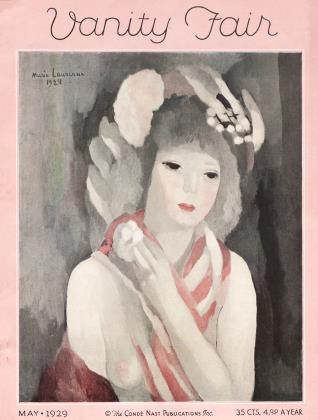 View Full Issue
View Full Issue












Subscribers have complete access to the archive.
Sign In Not a Subscriber?Join Now